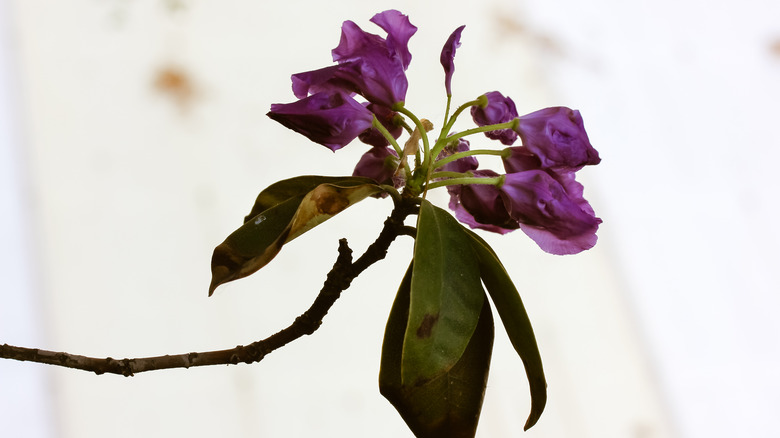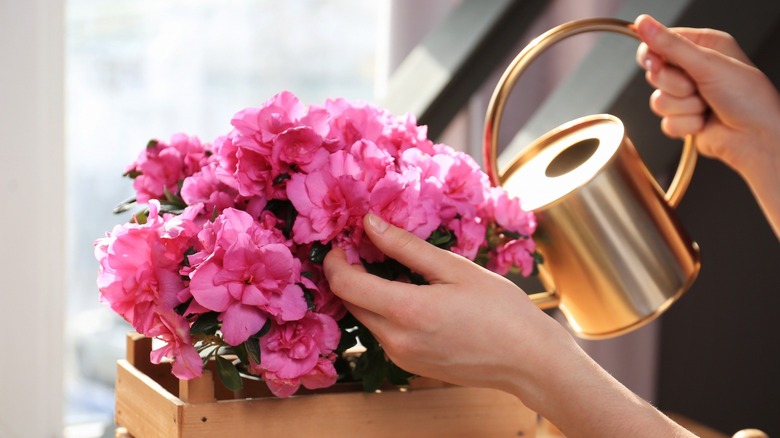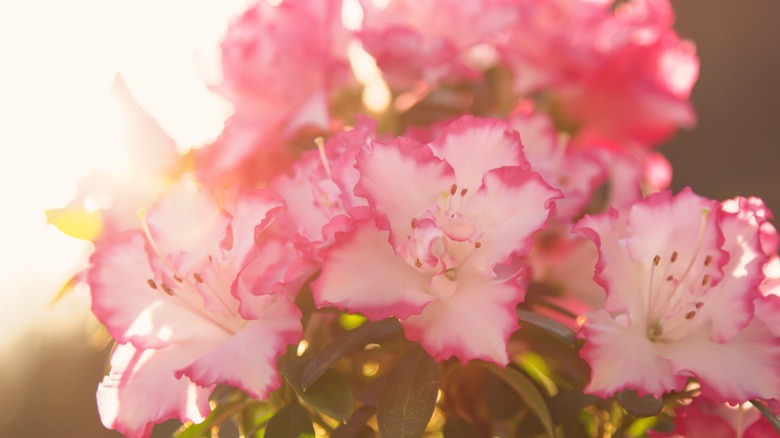If Your Azaleas Are Wilting, Here Are The Likely Causes
If you have azaleas in your flower garden, seeing them start to droop and wilt can be frustrating. But don't worry, it can happen to anyone, especially when it's hot outside. There are actually several different reasons why this can occur. Not enough water and drought, or too much water and root rot, are probably the most common culprits. Too much sun can also be something to consider. We're going to look at these problems more closely, and talk about how to fix them.
It's important to know that azaleas have a shallow root system, meaning they're closer to the surface than many other plants, making them more vulnerable to hot, dry weather. Therefore, your azaleas may be the first to visibly suffer stress symptoms during drought conditions. In fact, this also makes the roots particularly vulnerable to other issues, as well. Azaleas can indeed be tricky to care for, but with this knowledge, you can hopefully keep your plants healthy and free from wilting.
Too little or too much water and what to do about it
If underwatering is the problem, it's the easiest one to fix! Azaleas do need frequent watering, especially in the summer. Make sure the soil is kept consistently moist, but not soaking wet. Once the first inch or two of soil is dry, it's time to water. You really don't even want the soil to dry out — at least not during the growing season. You should avoid splashing water onto the leaves, as this can promote fungus growth and disease, which azaleas are prone to.
Overwatering will cause the same wilting symptom, and if you're not careful, root rot will set in. It's important to catch this before any additional symptoms begin to show, such as leaves that turn yellow or brown, or a foul smell and mushy roots. In the case of root rot, it may be possible to save them, but it's going to take some work. If they're in a container, remove the root system and shake the soil out. Throw away the soil from the pot and replace it with fresh soil. Take clean, sharp shears and cut off all the unhealthy roots before replanting. Go slowly with watering until the plant is readjusted. Keep the soil moist, but not wet, and cross your fingers!
Too much sun and what to do about it
Another thing that commonly causes azaleas to wilt is too much sun. One of its basic requirements is partial shade, ideally only getting about four hours of morning sun. Once that time is over, azaleas need shielding from the brutal sun or they will begin to droop. The sun dries out the soil quickly, and since we know azaleas need moist soil, this can easily happen in warm climates.
Watering more often may become necessary — even daily if that's what it takes to keep the soil moist. Apply a layer of mulch approximately two inches thick, as this will help the soil retain moisture and cool down the roots beneath. It will be crucial to find the right balance of sun and shade if your azaleas are outside. Plant something that can provide some shade for them if necessary, or transplant them to a more suitable spot.
Be sure you prune the damaged or dying leaves so the plant can use their energy to recover and promote new growth. Keep in mind these are not the only causes for wilting azaleas; it could also be pests or disease, but this is a good place to start if you're unsure.


